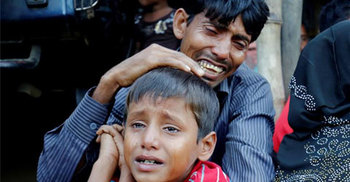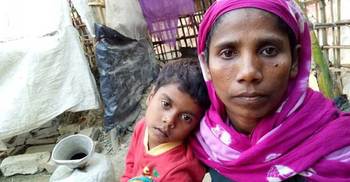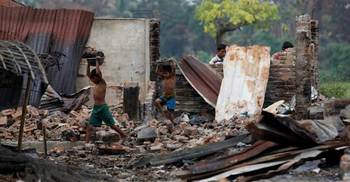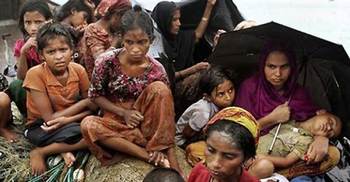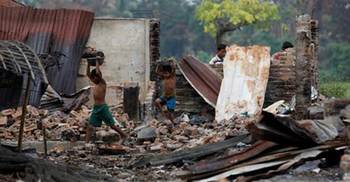Rohingya face health care bias in parts of Asia, study finds
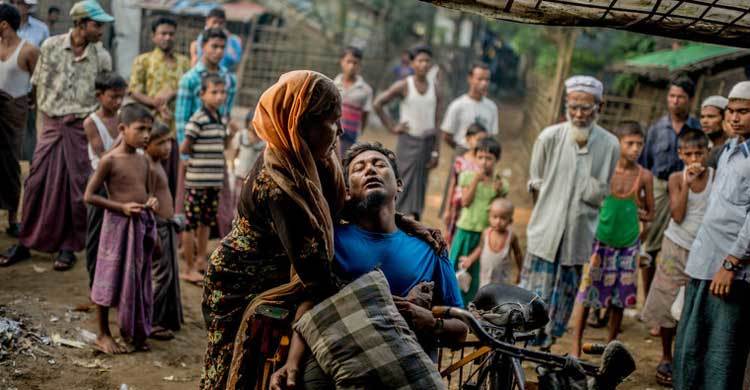
Members of the Rohingya ethnic group face chronic discrimination in access to medical care in Myanmar and other Asian countries, with severe consequences for health and mortality rates, a study has found.
The report, published online by the British medical journal The Lancet on Dec. 1, said the Myanmar government’s role in the situation could arguably be characterized as genocide or ethnic cleansing.
The study analyzed health care indicators in Myanmar, Bangladesh, Malaysia and other countries where about 1.5 million Rohingya live. The researchers compiled data from governments, human rights groups and other sources. It found that the indicators were consistently worse for the Rohingya, a Muslim ethnic group, than for other populations living in the same areas.
The researchers were especially critical of the government of Myanmar, which faces international pressure to address a continuing humanitarian crisis in Rakhine State, a region on the border with Bangladesh, where advocacy groups say the authorities have killed dozens of Rohingya after an attack in October on a police border post.
“The part played by the Myanmar government in restricting Rohingya reproductive rights, and in the high morbidity and mortality of the Rohingya people, could arguably be advanced as a charge of genocide, or at the very least as ethnic cleansing,” the report said, referring to what it said was a pattern of health-related discrimination that stretched back decades.
In Maungdaw and Butheetaung townships, in the area of Rakhine State where much of the recent violence against Rohingya people has occurred, there was only one physician per 158,000 people, compared with one physician per 681 people in the Buddhist-majority area around Sittwe, the state capital, the study said, citing the government data from 2013.
Dr. Htun Tin, director of the Disaster and Public Health Emergency Response Unit at Myanmar’s Health Ministry, pushed back against the report in a telephone interview on Monday.
“We never restricted Bengalis reproductive rights,” Dr. Htun Tin said, using a term for Rohingya that is common in Buddhist-majority Myanmar. Many there consider the Rohingya to be from Bangladesh, even if their families have been in Myanmar for generations.
“We are trying our best to give health care to all people in Rakhine State,” Dr. Htun Tin added.
Myanmar has denied the Rohingya citizenship under a 1982 law that excludes them from a list of 135 approved “national races.” Between 300,000 and half a million Rohingya are now believed to live in Bangladesh. The government there began its first census of undocumented Rohingya refugees in June.
The Lancet study, by researchers at Harvard University Medical School and the School of Public Health, cited examples in several countries, beginning in the late 1970s, in which the Rohingya suffered from poor access to obstetric care and a high prevalence of waterborne illnesses, among other health problems.
Stunting, or lower-than-normal height because of malnutrition, affects 60 percent of Rohingya child refugees in Bangladesh, a rate 50 percent higher than among the country’s general population, the study said, citing data from 2002 and 2012 collected by Doctors Without Borders and the United Nations. It also documented rates of diarrhea among children that were far higher for Rohingya children in Bangladesh, Malaysia and India in recent years than they were in the general populations of those countries.
Diarrhea is a leading cause of malnutrition in children under 5, according to the World Health Organization. It can also be life-threatening, especially in young people who are malnourished or who have compromised immune systems. It kills about 760,000 children under 5 each year, the agency says.
But the study paid particular attention to health problems in Rakhine State, which has more than one million Rohingya people and where about 140,000 Rohingya have been living in camps for internally displaced people around Sittwe, since a spasm of communal violence in 2012 left them homeless.
In recent weeks, human rights groups have relayed allegations of rape and arbitrary killings of Rohingya people by the authorities in northern Rakhine State, as satellite images show villages burned to the ground. Thousands of Rohingya have fled to neighboring Bangladesh, and the United Nations human rights agency has said abuses against them may be crimes against humanity.
The Lancet study, citing a 2013 government report, said there was just one latrine per 37 people in the Sittwe camps on average, and that diarrheal illness affected 40 percent of Rohingya children under 5 who live in the camps — five times the rate for other children in Rakhine State.
The mortality rate for children younger than 5 in Maungdaw and Butheetaung was 135 and 224 deaths per 1,000 live births, compared with 77 deaths per 1,000 live births in the Sittwe area, the study added.
In a statement on Monday, Mark Cutts, the head of the United Nations Office for the Coordination of Humanitarian Affairs in Myanmar, said that humanitarian organizations in the country had long called for improved access to health services for Muslims and other vulnerable groups that face restrictive policies.
Although access to basic health services was historically low for both Buddhists and Muslims in Rakhine State, he added, “Muslim people face a number of additional barriers in accessing health care because of movement restrictions” and inadequate emergency referral procedures.
Dr. Thaung Hlaing, the director of the Rakhine State Public Health Department’s Strategic Health Operations Center, said in a telephone interview on Monday that all of the state’s hospitals were functioning well.
But he suggested that the government should not be blamed for not providing health care in the state’s restive northern townships.
“We wouldn’t dare to go and give health services in villages where the conflict happened” because of security concerns, he said. “If villagers from that area can come to hospital, we can give full service.”
Source : New York Times

